News & Articles
Browse all content by date.
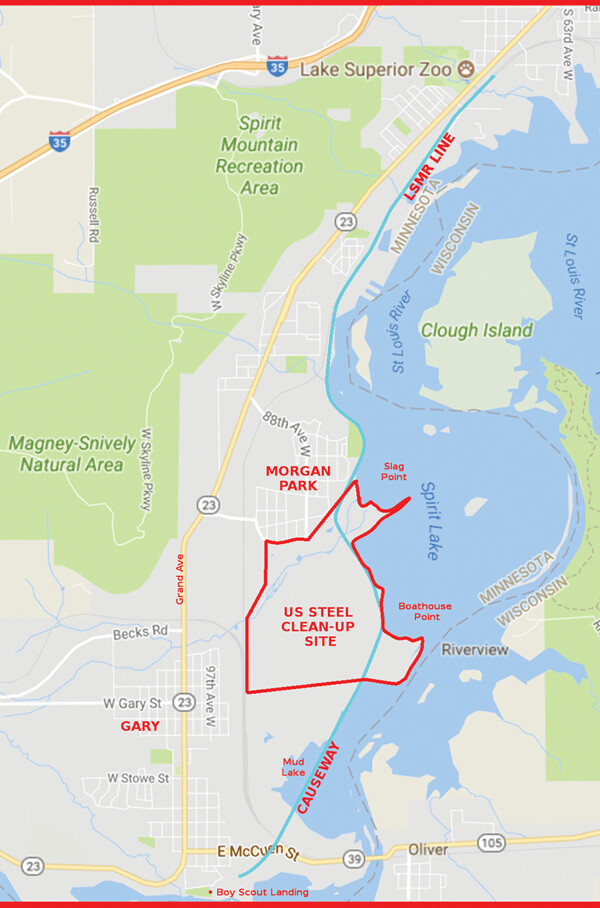
Last week, I reported on Mayor Emily Larson’s proposal to remove a causeway from the Lake Superior and Mississippi Railroad excursion line in West Duluth. The mile-long causeway crosses a broad, shallow section of the St. Louis River estuary known as Mud Lake. It has been in place for 70 years, covering a trestle that was there for 80 years before that. By removing it, the city would chop 1.5 miles off the LSMR’s 6.2-mile line and open up the waters of Mud Lake to the river at large. Mayor Larson characterized her proposal as a “compromise” between LSMR advocates and natural resource professionals.
LSMR supporters were shocked and dismayed. The causeway was the highlight of their excursion, they protested. In addition to giving riders a great sense of history, the trip across Mud Lake offered a sweeping view of the St. Louis River estuary from a unique vantage point. If the city got rid of it, the tracks would simply end in the woods on Mud Lake’s north shore. As the LSMR was already going to lose at least two years’ worth of operational revenue while the nearby US Steel cleanup project was ongoing, advocates feared that getting rid of the causeway would doom their operation.
Many LSMR supporters suspected that the city had been biased against the train from the beginning. The several stakeholder meetings the city had sponsored over the previous year, they thought, were shams meant to legitimize a predetermined conclusion. As I researched this story—conducting interviews, reading draft agreements, and organizing internal City Hall emails obtained via data request—I kept an eye out for proof of this charge.
In the end, I concluded that the city was not biased against the train from the beginning. Whenever I found an instance where the city was accused of overlooking or minimizing the LSMR’s concerns, the city took those concerns to heart and made an effort to address them. The city’s true anti-train bias didn’t emerge until January of 2017, a year and a half into the process.
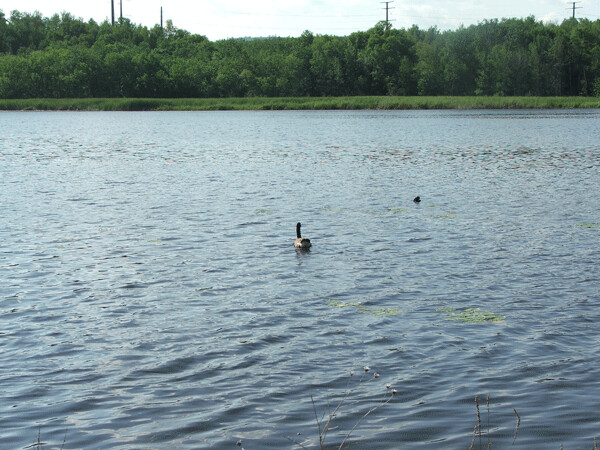
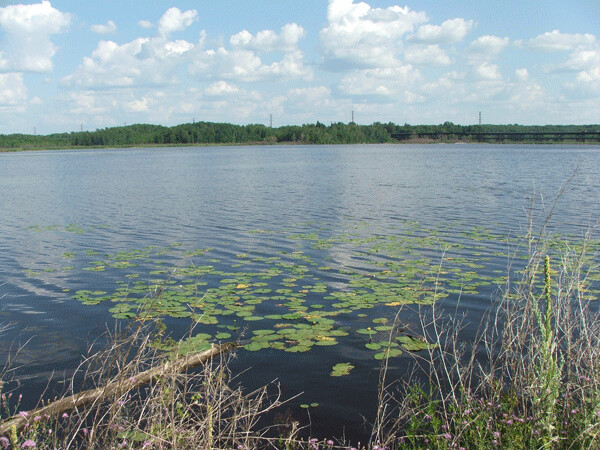
Early days
The fate of the LSMR causeway is connected to the federal US Steel cleanup project and the city’s Western Waterfront Trail extension project. Planning for both projects began in 2015.
In a letter that Chief Administrative Officer Dave Montgomery sent to US Steel/EPA on August 18, 2015, the city presented US Steel/EPA with two options. In the first option, US Steel/EPA would restore the LSMR railroad to its original condition when the cleanup was complete, as well as build the excursion line a new $450,000 “riverfront rail stop with associated park amenities.” In the second option, the city would abandon half of the rail line—the 3.3 miles between Morgan Park and Boyscout Landing—and US Steel/EPA would pay $1 million to convert the abandoned rail bed into a crushed gravel trail. The city indicated in the letter that they did not yet know which option they would choose, but they wanted US Steel/EPA to be ready to fund either.
Ultimately, of course, the city would adopt neither option, but there was no talk, at that time, of removing the causeway. Nor did the letter indicate a clear preference on the city’s part for eliminating the train.
During the first half of 2016, city staff, led by Director of Public Administration Jim Filby Williams, met regularly to discuss the WWFT. To assist them, the city decided to hire engineering firm LHB to provide “master planning services for the Western Waterfront Trail and associated parks.” Here is where the city first ran afoul of the railroad.
The LHB contract went to the city council on June 27, 2016. As part of the scope of work, the city asked LHB to research “rail-to-trail success stories” from around the country. Since rail-to-trail, by definition, meant eliminating rail, the LSMR naturally viewed this as a bias against the railroad.
Speaking to the council, LSMR President Andy Webb said, “I’d like ‘research on rail-AND-trail success stories’ added in there, otherwise it gives the impression that a decision has already been made.” LSMR volunteer Mike Casey reiterated this concern, as well as noting other omissions and weaknesses in the contract. The council voted to table the resolution until the LSMR’s concerns had been addressed.
Filby Williams was unhappy. In an email to staff on July 7, 2016, he wrote, “Putting aside my petty chagrin at getting corrected publicly and repeatedly on this agreement, Mike [Casey] has been essentially correct on almost every count, identifying and remedying errors and omissions. I also think he is probably correct that, in the future, for projects of this magnitude and complexity, we should convene stakeholders prior to hiring a consultant and engage them in crafting and agreeing upon the scope of service....This process has reduced our credibility and emboldened citizen advocates.”
Thereafter, Filby Williams and his staff made a pointed effort to include the LSMR’s concerns in their planning. There are many emails where they discuss among themselves how the LSMR might perceive some step that the city was considering, and how the city might remedy any perceived bias. It seems clear that the emboldened citizen advocates of the LSMR, by insisting on their right to be recognized, had an effect on the city’s internal planning process.
On August 6, 2016, Filby Williams and his staff speculated about “destroying a modest amount of open water on Mud Lake” in order to widen the causeway to accommodate both the train and a trail. “A combo option is most desirable if both uses can be on the Mud Lake causeway,” wrote Filby Williams. The idea was eventually dropped as being cost-prohibitive.

The Minnesota Land Trust
While the city was not particularly biased against the LSMR at first, there were several instances where they did have to be reminded to include the train. Natural resource professionals, on the other hand, were always included in the discussion. In fact, the city had natural resource professionals under contract to assist them from the very beginning of the process.
The Minnesota Land Trust is a St. Paul-based nonprofit whose mission is to “protect and restore Minnesota’s most vital natural lands in order to provide wildlife habitat, clean water, outdoor experiences and scenic beauty for generations to come.” The Land Trust has worked closely with the DNR and other agencies over the past several years to accomplish a number of clean-up and restoration projects in the St. Louis River estuary.
In 2014, the Ness Administration hired the Land Trust to “develop marketing strategies to promote the city’s outdoor adventure experiences,” “provide tourism-related promotional content,” and “work with City staff to develop action items for specific real estate and infrastructure improvements for the trails and recreation system,” among other things. The contract, which paid the Land Trust $310,000 over three years, was extended for an additional two years by the Larson Administration this past August.
When city staff held their first WWFT strategy session in early 2016, only two non-city employees were in the room: Christine Penney, a professional grant-writer, and Daryl Peterson, a conservation specialist with the Minnesota Land Trust. Throughout the planning process, Peterson was ever-present, offering his perspective on various ecological questions and serving as a liaison to natural resource professionals from other agencies.
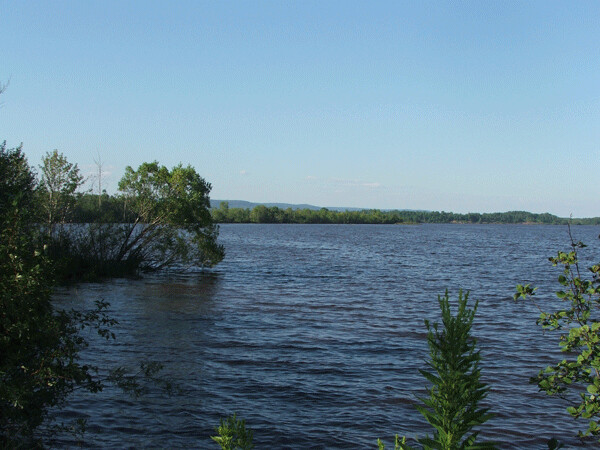
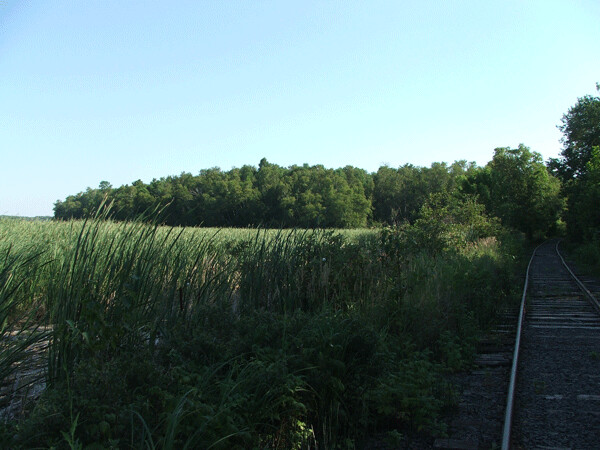
The River-Friendly Option
On January 5, 2017, with little warning, city planning took a hard turn against the railroad. On that day, Daryl Peterson emailed Jim Filby Williams. “In response to your request this morning to help the City evaluate the ecological benefit of the ‘river friendly’ WWFT option, I feel comfortable that [that] would fit within the Land Trust’s existing contract with the City.”
Coined by Filby Williams, the “River-Friendly Option” referred to the idea of removing the causeway from Mud Lake. City staff and LHB consultant Heidi Bringman were instructed to revise document titles to include mention of the River-Friendly Option. Now, the scenarios that the city was officially considering for the WWFT were: (1) rail with trail; (2) conventional rail to trail; and (3) river-friendly rail to trail. By attaching the river-friendly label to Option 3, the city implied that the other options, which would leave the causeway in place, were river-unfriendly.
On January 11, Filby Williams emailed his staff to discuss a stakeholder meeting scheduled for the following day. “One key question for the stakeholders as they envision scenarios 2 and 3: If the rail operation were to cease and the vast majority of the rails and ties are removed, how should the City of Duluth memorialize the history of the railroad? […] If and when we choose to eliminate operating rail, the LSMR folks will be key contributors to plans for memorialization. Perhaps they can begin thinking about that possibility tomorrow.” In other words, he wanted the LSMR to start thinking about their own demise and what they might like to have engraved on their tombstone.
To bolster his vision, Filby Williams had Daryl Peterson convene a panel of six natural resource professionals from various agencies “to evaluate the ecological significance of preferred river restoration actions associated with each of the three remaining options.” In his notes from the meeting, Peterson wrote that adding openings to the causeway would “moderately improve water circulation” and “have some benefit for resident aquatic invertebrates,” but removing the causeway altogether “could result in 3,000 feet of new riparian connectivity, 92 acres of restored shallow sheltered bay and about 45 acres of new open water. Mud Lake is the most significant opportunity to restore aquatic habitat improving biological and hydrologic connectivity in the St. Louis River estuary upstream of Grassy Point.” Clearly, the city had picked the right consultant to bolster the city’s preferred option.
On March 17, Filby Williams sent his staff a memo outlining the recommendation that he wanted to present to the mayor. In it, he called for totally removing all 6.2 miles of the LSMR railroad tracks and extending the WWFT along the corridor.
Mayor Larson did not agree with getting rid of the whole railroad. Following her meeting with Filby Williams and CAO Montgomery, the mayor recommended cutting off the rail at Slag Point, which would eliminate about two and a half miles from the line. The meeting was also when the city took its first formal step toward eliminating the causeway. In a proposal to US Steel/EPA that Filby Williams drafted following the meeting, the city asked US Steel/EPA to remove the causeway, transfer ownership of the Mud Lake shoreline to the city, “fully finance a robust restoration of Mud Lake,” and “compensate the City of Duluth $1.3 million.” The city would then use the money to help fund further extensions of the WWFT.
On March 27, Filby Williams urged the mayor to “commission a critically important assessment of the condition of the LSMR rail,” because “Regional rail authorities I trust have remarked that our failure to ever conduct such an assessment of a City-owned railroad widely recognized to be in unusually deteriorated condition is bad practice that exposes the public to potential harm and the City to potential liability.” Given the context, it seems likely that Filby Williams was looking for more justification to get rid of the railroad.
On April 13, Filby Williams assured the mayor via email that only the environmental scientists were aware of her favored vision. “I have spoken about your compromise vision only to leaders of agencies whose monetary support is essential to our ability to execute the vision: John Lindgren and Molly McGregor at DNR who, informed by the possibility of a robust Mud Lake restoration that includes removal of the causeway, are preparing studiously vague funding requests to EPA and MN Legacy for Mud Lake restoration activities...Scott Cienawski at EPA who has expressed interest in EPA funding for the vision and has confirmed the feasibility of our ask; and Kris Larson at Minnesota Land Trust who is confidentially helping to strategize our approach to the agencies and US Steel. These are all seasoned leaders I know well and trust to keep our confidence.”
“Studiously vague funding requests”? “Confidentially helping to strategize our approach”? This communication clearly indicates that the city was paying the Land Trust to work against the interests of the LSMR, and that a number of other natural resource managers were willing to devote their own resources to do the same thing.
On April 20, LHB’s Heidi Bringman emailed city project coordinator Lisa Luokkala. “Dependent on what the recommendation is, we have some thoughts on how best to politically roll out the final decision. We fear that the news might not be good for one user group so we feel strongly that the City needs to be more thoughtful about how the news is delivered to the public.” This is further proof, if further proof is needed, of how paid consultants generally pursue the interests of the administration.
Behind the scenes, Filby Williams was lobbying the mayor to terminate the rail line at Mud Lake, rather than Slag Point. “I want to reiterate my serious doubts that we can negotiate political support for a plan that stops short of the north shore of Mud Lake,” he wrote her on March 27. The mayor eventually adopted the Mud Lake terminus into her proposal.
On May 6, Filby Williams’s wish to have someone inspect the LSMR’s tracks was granted. Three inspectors from the Federal Railroad Administration, with the willing assent of the LSMR, conducted a complete inspection of the rail line. The problems they found were minor, and the LSMR fixed them within weeks.
On May 15, Mayor Larson spoke with LSMR President Andy Webb and told him that she was “seeking a mix of rail plus trail, with length of each still being determined.” She may have suffered a pang of conscience at her vagueness, because on May 19, she emailed Filby Williams, “I’d like to communicate intent and idea as openly as possible with LSMR and council. Please let me know the earliest point at which I can do so.” She apparently didn’t realize that she could do so whenever she wished.
On June 13, the mayor publicly unveiled her proposal to end the rail line at Mud Lake and eliminate the causeway. Daryl Peterson was in the audience. During the question-and-answer period, he enthusiastically endorsed the mayor’s vision. “We’re changing the way we look at the river. We’re changing the way we interact with the river. We’re gonna change our city. I really applaud the city for all the work they have done to get to this point.” Peterson neglected to mention that he was being paid by the city. Evidently, his scope of work included cameo appearances in public meetings.
The chicken and the egg
A few weeks after the mayor unveiled her proposal, Jim Filby Williams decided to convene another panel of natural resource experts to weigh in on Mud Lake. The idea was that the scientists would be given completely free rein to discuss any and all possibilities for the ecological restoration of Mud Lake, including removing the causeway, and that they would produce a report laying out their best recommendations. The report is expected to be done in early October. On August 9, Filby Williams told the Parks Commission that the city intended to be “quite deferent to their findings, whatever they might be.”
While this all sounds very impartial and scientific, in reality it’s a stacked deck. Many of the people on the panel have been involved with the city’s Mud Lake machinations for months already, considering exactly the same things. Daryl Peterson’s on it, collecting his regular paycheck. So is John Lindgren—the same guy who was preparing “studiously vague” funding requests back in April.
The last report on Mud Lake, compiled in 2013 by the Minnesota Pollution Control Agency, said, “There is no data to support the assumption that water exchange is limited between Mud Lake East and Mud Lake West due to the railroad causeway. To support definition of restoration objectives for improving water exchange, a hydrologic study should be conducted to define current conditions.” Since that time, no hydrologic study has been done and no further data collected, yet the panel is still going to make a recommendation. What could it possibly be based on?
When I spoke with John Lindgren on August 31, he said, “All I can tell you is that what we were planning on doing is...try[ing] to maximize hydrologic connection….[The DNR’s] official position is that we would support the greatest reconnection possible of East and West Mud Lake, because the placement of that causeway in the bed of the estuary fundamentally is an impairment to the estuary.”
But shouldn’t they have a hydrologic study in hand before making recommendations? I asked.
“Although it may make sense to have that information in your hand to guide the study [and] guide the decision-making of the city, we as a department don’t have the money right now to do that,” said Lindgren. “So it’s not sequenced right….It’s kind of a chicken and the egg kind of deal here, John….The Minnesota DNR does not own the causeway. The city owns the causeway....It’s not our decision to decide whether it’s coming out or staying in.”
It’s important to underscore the fact that the idea to remove the causeway originated with the city, not natural resource professionals. Prior to 2017, natural resource scientists considered the causeway to be a permanent part of the landscape and made recommendations on that basis. Essentially, what the city did was say to the scientists, “Would you like it if we got rid of the causeway?” and when the scientists said, “Sure,” the city spun it as a recommendation. The latest panel is only intended to add window-dressing to the mayor’s proposal. Of course they’ll recommend taking out the causeway. As Lindgren said, that’s their default position. You don’t need a panel to tell you that.
But why?
But why is the city so determined to get rid of the causeway? If it’s concern for the environment, this concern appeared very late in the process—more than a year of planning had gone by before anyone suggested it. In researching this story, I encountered many conspiracy theories to account for the city’s actions, none of which I will bother repeating here. In the end, I have concluded that the city’s primary motivation is probably financial.
Jim Filby Williams is an intelligent, strong-willed person who likes to set ambitious goals and accomplish them. My feeling is that early in 2017 he gave himself a mandate to finish the Western Waterfront Trail as completely and as quickly as possible. His first proposal, to take out the entire rail line, would have gone a long way toward accomplishing that. It was only after the mayor turned down that idea that Filby Williams began advocating for selling the causeway to US Steel. At that point (I surmise), it was the only way he could see to raise substantial capital to further extend the WWFT. In every letter to US Steel/EPA, the request to remove the causeway has been tied to a request for $1.3 million. The city has never mentioned this money in public, choosing instead to frame the issue in terms of the environment.
When I interviewed Filby Williams in July (and I should mention that he has always been willing to talk with me, and that he spent a fair amount of his personal time making sure that I received my large data request for emails in a timely manner), he hinted at this priority. “Our intent is to develop a rail-and-trail plan where we can be reasonably confident that the trail would actually get constructed. A rail-with-trail plan in which the trail cost is prohibitively expensive is not a rail-with-trail plan at all. It’s a rail plan….The plan that we’ve put forth...is really the only way we could find to craft a rail-with-trail plan where we were confident that we could actually build the trail.”
The real question is not whether removing the causeway would improve the health of the river. Of course it probably would, though not even the scientists know to what extent. The real question is whether removing the causeway would improve the health of the river enough to justify destroying a unique piece of historic infrastructure that’s been in active use for the past 37 years. Once the causeway is gone, it’s gone for good.

A surprise ending?
The punch line of the story is that, after all the controversy, federal regulations may prevent the city from removing the causeway.
When owners of rail lines decide to abandon the lines, they must file a Petition for Abandonment with the federal Surface Transportation Board. At that point, specific other entities may indicate that they want the line. One such entity is another railroad, which may desire the line for their own operations. Another such entity is a rail authority, which may want to preserve the rails for public use or turn the rail corridor into a public trail. If any of these entities files an objection to the abandonment, the original owner then has two options: They can either turn the line over to the requester for a negotiated price, or they can decide to retain ownership and not abandon the line after all. In no case, once an objection has been made, can they proceed with the abandonment.
The St. Louis and Lake Counties Regional Railroad Authority, based in Eveleth, was created by an act of the Minnesota Legislature in 1986. The Rail Authority currently owns and maintains 26 miles of active rail between Duluth and Two Harbors, which is what the North Shore Scenic Railroad runs their trains on. The Rail Authority also owns abandoned railway corridors (without tracks or ties) throughout Minnesota’s Iron Range. For many years, the Rail Authority has been blacktopping its rail corridors and converting them into a destination bike trail, known as the Mesabi Trail. When complete, the Mesabi Trail will run 155 miles from Grand Rapids to Ely.
If the city of Duluth filed to abandon part or all of the LSMR line, the Rail Authority would have a right to file an objection and request that the line be turned over to them. Whether or not they would do that is unknown. When I asked Bob Manzoline, the Rail Authority’s executive director, if he thought the Rail Authority would have any interest in taking over the LSMR line if the opportunity arose, he said, “Well, there always is interest.”
| Tweet |

